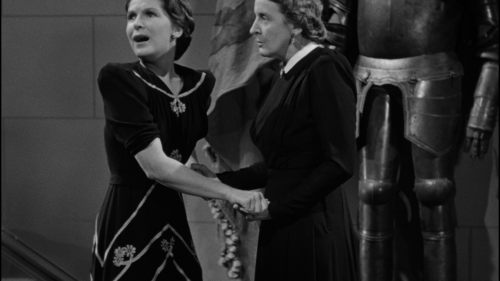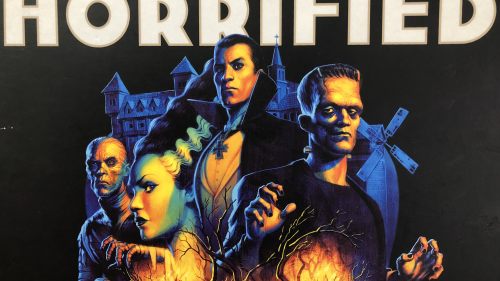Universal’s Classic Monsters Blu-Ray Review: An Encyclopedic Look At A Genre’s Origins
Horror demands - or at least encourages - a certain kind of expertise from its fans that many other genres do not. It’s tough to watch a movie about a slasher or a possession or a haunting in 2018 without knowing, or benefiting from the knowledge, that there were dozens, if not hundreds of films that covered this territory since the medium’s inception. And for the novice, there are two levels of research: the basics, those breakthrough films that established the familiar tropes of a subgenre or set it on its contemporary path, and the foundations, those truly essential works that set up the genre as a whole as both a fertile creative playground and commercial powerhouse. Universal’s recently-released Classic Monsters: Complete 30-Film Collection falls squarely into the latter category, providing a primer for horror fans new and old with a virtually comprehensive look at the early days of the genre, even as it showcases some of the industry’s earliest instincts to pump out sequels and follow ups if they were cheap and made money even after the creative well has run dry.
These movies have all been available before in one format or another, most of them with the extras included here, but there’s something special, and exciting, about their presentation as one encyclopedic set. Phantom of the Opera, Dracula, The Wolf Man, The Mummy, The Invisible Man, Frankenstein and my personal favorite, Creature From the Black Lagoon are assembled in their cinematic entireties, at least under the banner of Universal Studios, which was a destination for filmmakers eager to explore stories of the occult and supernatural. Lon Chaney Jr., Bela Lugosi, Boris Karloff and Claude Rains turned literary characters into living breathing men and monsters, while filmmakers like James Whale (Frankenstein), Tod Browning, Curt Siodmak and Karl Freund turned their stories into genre boilerplate, and established a visual and narrative language that survives - and thrives! - even today.
Despite their previous availability, the extras in the set offer some unique perspectives and even new experiences for viewers, including Philip Glass’ score, composed in 1999, for Browning’s Dracula, two commentaries and a documentary for Whale’s Frankenstein, featurettes exploring both the making and mythology of The Wolf Man, the exquisite Spanish-language version of Dracula, and 2- and 3D presentation of both Creature From the Black Lagoon and its first sequel, Revenge of the Creature. All of these disparate elements in one place affords fans to experience the films in the way they may have first seen them, and then decide in which way they prefer them; meanwhile, the commentaries and supplemental content provides background, context and other information that enhances viewers’ understanding and appreciation for the artistic choices, cultural climate, and commercial realities of adapting these characters for the silver screen.
More broadly, the compilation of these titles, and even character-specific collections, underscores an interesting interchangeability to the folks at Universal, who did not seem to hesitate when opportunities came for team-ups, crossovers and so forth. Saying nothing of their quality, the release of Freddy vs. Jason was an event; Frankenstein Meets The Wolf Man was just another story to tell with these monsters. (The fact that three movies pop up in three different sets in this box - House of Frankenstein, House of Dracula, and Abbott and Costello Meet Frankenstein - speaks to the way that Universal regarded their intellectual property as fodder for any sort of commercial opportunity.) Moreover, the studio was also more than happy to exploit these characters without any particular regard for their cinematic identity or legacy; Abbott and Costello Meet Frankenstein may have gone on to be inducted into the National Film Registry in 2001, but there’s something amusing, and a little shocking, about Universal shopping not only their iconic library of characters but the visual lexicon these films established for a flat-out comedy, even one featuring some of the biggest stars in Hollywood.
But the thing that this overlap/duplication allows that’s unique to the single character or franchise sets is the ability to compare trajectories - to see how, say, Frankenstein’s monster evolved alongside or parallel to The Wolf Man, in the context of their respective “franchises,” such as they were. Does one come off better than the other? Where do the filmmaker’s loyalties lie? Or where did the studio continue to recruit its top-shelf talent for stories and where did they cut corners (much less costs)? And where did these choices trickle down to subsequent generations of filmmakers (and studio executives) about where to spend and where to save, where to indulge or explore and where to show restraint? The box contains not just the history of these characters, but a history of film itself, encapsulated in the legacy of these characters, and this studio’s treatment of them. Classic Monsters offers literal days of entertainment, but it also provides lifetimes of lessons - whether you’re a horror fan trying to cover, uncover, or just develop an appreciation for some of the most important of its bases, or you’re a filmmaker exploring the genre from the inside in order learn the origins of its style, the techniques behind them, or just to seek inspiration from some of its most iconic thrills.



